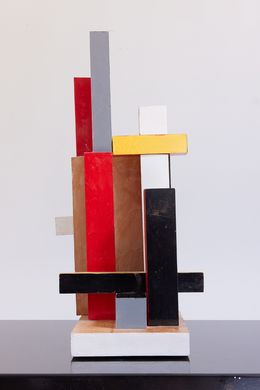
Inspired by Mondrian
There was a before and an after Piet Mondrian in the history of art. During the first half of the 20th century, the Dutch painter participated in many of the avant-garde movements, seeking for new pictorial approaches through colours and rhythm, which he associated with his deep interest for Jazz.
Piet Mondrian (1872-1944) entered the National Academy of the Beaux-Arts in 1892. He was obsessed with the idea of imparting a “universal beauty" to his canvases. Behind the artist's painting there had to be an idea, touching upon the notions of symbolism. His attraction for the movement was concretised when he met the Dutch painter Jan Toorop, an artist who mixed pictorial symbolism with Art nouveau. Little by little, Mondrian freed himself from figurative art to develop an abstract style and get closer to the subject's inner essence.
Van Gogh's œuvre also had a substantial impact on Piet Mondrian's painting. The vibrant lyricism of the reds ribbed with blue-greys in his canvas Devotie (1908) was deeply inspired by Van Gogh. Little by little, Mondrian started incorporating abstraction to his productions, which made him the iconic Modernist painter that we know today.
In 1904, Mondrian discovered the spiritual movement of theosophy, which argued for a cosmic perception of the world. The artist was sensitive to this conception that was more spiritual than the art itself. Drawing inspiration from this world conception, the painter sought to create a transcendental art, which he achieved by decomposing simple shapes and contrasting saturated colours. After being part of the cubist movement, Mondrian created a new pictorial language along with Kandinsky, Kupka, Picabia, Robert and Sonia Delaunay. Abstract art differentiated itself from cubism as these artists sought an abstraction that was purer and close to the truth, as Mondrian often highlighted.
At the height of his art, Piet Mondrian refused all forms of material from nature to reveal the essence itself. He only wished to express his creations through straight lines and primary colours. Mondrian established himself as the master of abstraction and successfully created a universal artistic language to make sense of the absurd surrounding world. “Composition I in Red, Blue, and Yellow" became the new “Luncheon on the Grass": a manifesto that inspired many future generations of artists.
In this selection, you'll find artworks by contemporary artists who are paying tribute to this icon of Modernism.







